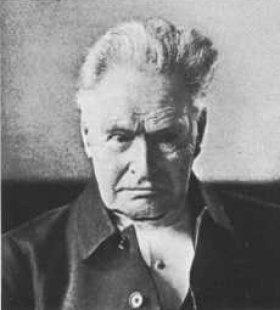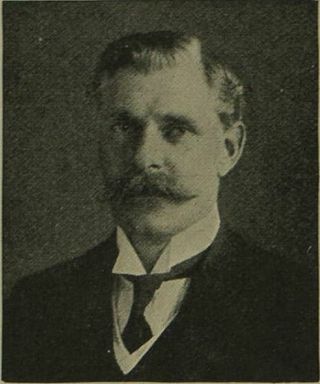
Earl of Rosslyn is a title in the Peerage of the United Kingdom. It was created in 1801 for Alexander Wedderburn, 1st Baron Loughborough, Lord Chancellor from 1793 to 1801, with special remainder to his nephew Sir James St Clair-Erskine, as Wedderburn had no surviving issue of his own. Wedderburn had already been created Baron Loughborough, of Loughborough in the County of Leicester, in the Peerage of Great Britain in 1780, with normal remainder to the heirs male of his body, and Baron Loughborough, of Loughborough in the County of Surrey, in the Peerage of Great Britain in 1795, with the same remainder as the earldom. The 1780 barony became extinct upon his death, but the 1795 barony and the earldom passed, by the special remainder, to his nephew, who thus became the second Earl of Rosslyn. The second Earl was a Lieutenant-General in the Army and also held political office as Lord Privy Seal and Lord President of the Council.

Earl of Lonsdale is a title that has been created twice in British history, firstly in the Peerage of Great Britain in 1784, and then in the Peerage of the United Kingdom in 1807, both times for members of the Lowther family.

Viscount Ridley is a title in the Peerage of the United Kingdom. It was created in 1900 for the Conservative politician Sir Matthew White Ridley, 5th Baronet, Home Secretary from 1895 to 1900. He was made Baron Wensleydale, of Blagdon and Blyth in the County of Northumberland, at the same time, also in the Peerage of the United Kingdom. The latter title was a revival of the barony held by his maternal grandfather James Parke, Baron Wensleydale, whose title became extinct upon his death since none of his sons survived him.

Viscount Scarsdale, of Scarsdale in Derbyshire, is a title in the Peerage of the United Kingdom. It was created in 1911 for the prominent Conservative politician and former Viceroy of India George Curzon, 1st Baron Curzon of Kedleston, who was created Earl Curzon of Kedleston at the same time and was later made Marquess Curzon of Kedleston.

Baron Grimthorpe, of Grimthorpe in the East Riding of the County of York, is a title in the Peerage of the United Kingdom. It was created on 17 February 1886 for the lawyer and architect Edmund Beckett, 5th Baronet, with remainder to the heirs male of his father. He was succeeded according to the special remainder by his nephew, the second Baron. He had earlier represented Grimsby in Parliament. As of 2014 the titles are held by the latter's great-grandson, the fifth Baron, who succeeded his father in 2003.
Baron Derwent, of Hackness in the North Riding of the County of York, is a title in the Peerage of the United Kingdom. It was created on 10 October 1881 for the former Liberal Member of Parliament for Scarborough, Sir Harcourt Vanden-Bempde-Johnstone, 3rd Baronet. His grandson, the third Baron, was an author, poet and minor diplomat. On his death in 1949 the titles passed to his younger brother, the fourth Baron. He served in the Conservative administrations of Harold Macmillan and Sir Alec Douglas-Home as Minister of State for Trade and Minister of State for Home Affairs. As of 2010 the titles are held by his son, the fifth Baron, who succeeded in 1986.

Baron Rothschild, of Tring in the County of Hertfordshire, is a title in the Peerage of the United Kingdom. It was created in 1885 for Sir Nathan Rothschild, 2nd Baronet, a member of the Rothschild banking family. He was the first Jewish member of the House of Lords not to have previously converted to Christianity. The current holder of the title is Jacob Rothschild, 4th Baron Rothschild, who inherited the barony in 1990.

Baron Ravensdale, of Ravensdale in the County of Derby, is a title in the Peerage of the United Kingdom. It was created in 1911 for the Conservative politician George Curzon, 1st Baron Curzon, of Kedleston, who had previously served as Viceroy of India.

Baron Islington, of Islington in the County of London, was a title in the Peerage of the United Kingdom. It was created in 1910 for Sir John Poynder-Dickson, 6th Baronet, Governor of New Zealand from 1910 to 1912.
There have been four baronetcies created for persons with the surname Leslie, one in the Baronetage of Nova Scotia, one in the Baronetage of Ireland, one in the Baronetage of Great Britain and one in the Baronetage of the United Kingdom. Three of the creations are extant as of 2010.

Sir David Salomons, 1st Baronet, was a leading figure in the 19th century struggle for Jewish emancipation in the United Kingdom. He was the first Jewish Sheriff of the City of London and Lord Mayor of London.
There have been five Baronetcies created for people with the surname Forbes, four in the Baronetage of Nova Scotia and one in the Baronetage of the United Kingdom. The first holder of the Burn Baronetcy of Jessfield, created in the Baronetage of the United Kingdom in 1923, assumed the surname of Forbes-Leith of Fyvie in 1925.
There have been six baronetcies created for persons with the surname Brooke, one in the Baronetage of England, one in the Baronetage of Ireland and four in the Baronetage of the United Kingdom. As of 2015 four of the creations are extant, though one has been subsumed into a peerage.
There have been three baronetcies held by people with the surname Lindsay, one in the Baronetage of Nova Scotia and two in the Baronetage of the United Kingdom. One creation is extant.

The Blunt Baronetcy, of the City of London, is a title in the Baronetage of Great Britain. It was created on 17 June 1720 for John Blunt, the famous perpetrator of the South Sea Bubble, for his good work for the nation of Great Britain. From 1703 he was the secretary of the Hollow Sword Blade Company, a joint-stock company effectively operating as a bank. He was a director of the South Sea Company from 1711. He was the main architect of the ambitious scheme for the company to assume the National Debt, and when the bribery and fraud were revealed, Parliament confiscated all his assets except £5,000, while most directors were allowed to retain £10,000.
There have been four baronetcies created for persons with the surname Rich, two in the Baronetage of England, one in the Baronetage of Great Britain and one in the Baronetage of the United Kingdom. As of 2008 three of the creations are extinct while one is dormant.
There have been three baronetcies created for persons with the surname Clayton, two in the Baronetage of Great Britain and one in the Baronetage of the United Kingdom. One creation is extant as of 2021.

The Goldsmid Baronetcy, of St John's Lodge in the County of Surrey, was a title in the Baronetage of the United Kingdom. It was created on 15 October 1841 for Isaac Goldsmid, a financier and one of the leading figures in the Jewish emancipation in the United Kingdom. He was the first Jew to be created a baronet. He was succeeded by his son, the second Baronet. He was a barrister and sat as member of parliament for Reading. He was childless and was succeeded by his nephew, the third Baronet. He was a barrister, businessman and Liberal politician. Goldsmid had eight daughters but no sons and on his death in 1896 the title became extinct.
The d'Avigdor-Goldsmid Baronetcy, of Somerhill in the County of Kent, was a title in the Baronetage of the United Kingdom. It was created on 22 January 1934 for Osmond d'Avigdor-Goldsmid, president of the Board of Deputies of British Jews and chairman for the Jewish Agency for Palestine in London. He was the grandson of Count Henri Salomon d'Avigdor, Duke of Acquaviva, and Rachel, daughter of Sir Isaac Goldsmid, 1st Baronet, and succeeded to the Goldsmid estates on the death of his cousin Sir Julian Goldsmid, 3rd Baronet. His eldest son, the second Baronet, was a company director and Conservative politician. The latter was succeeded by his younger brother, the third Baronet, a retired military commander. He was Conservative Member of Parliament for Lichfield and Tamworth. The title became extinct on his death in 1987.
There have been three baronetcies created for people with the surname Moncreiffe or Moncreiff, two in the Baronetage of Nova Scotia and one in the Baronetage of the United Kingdom. Two of the titles are dormant, as the heir has not proved his descent, and one is extant, though its holder does not bear the surname of Moncreiffe.










